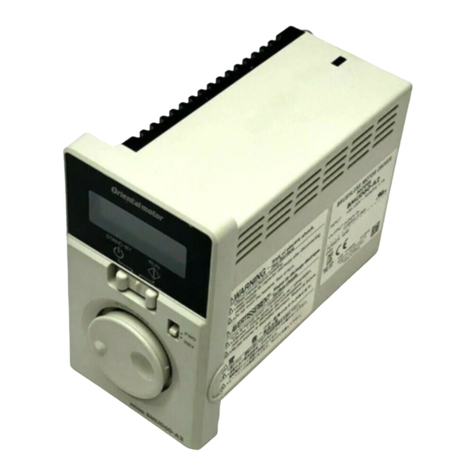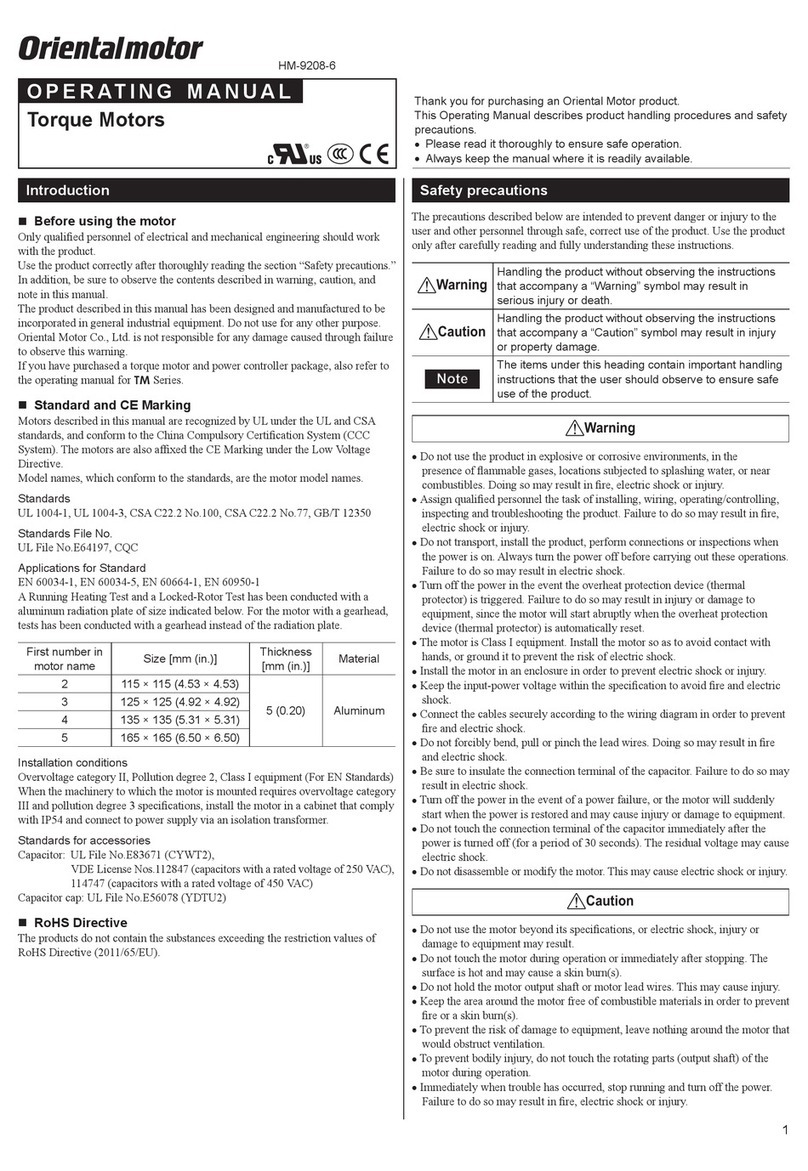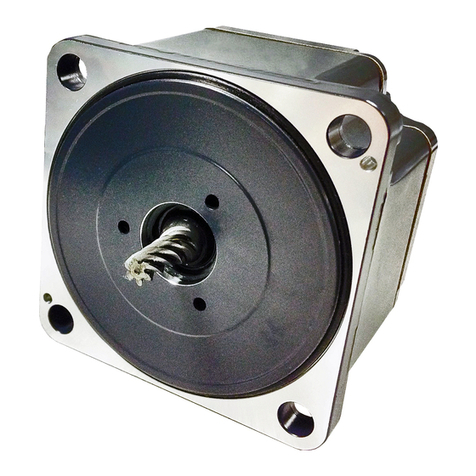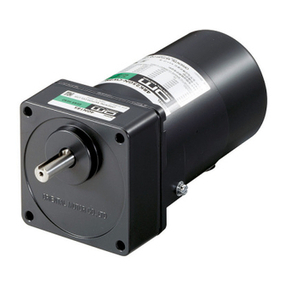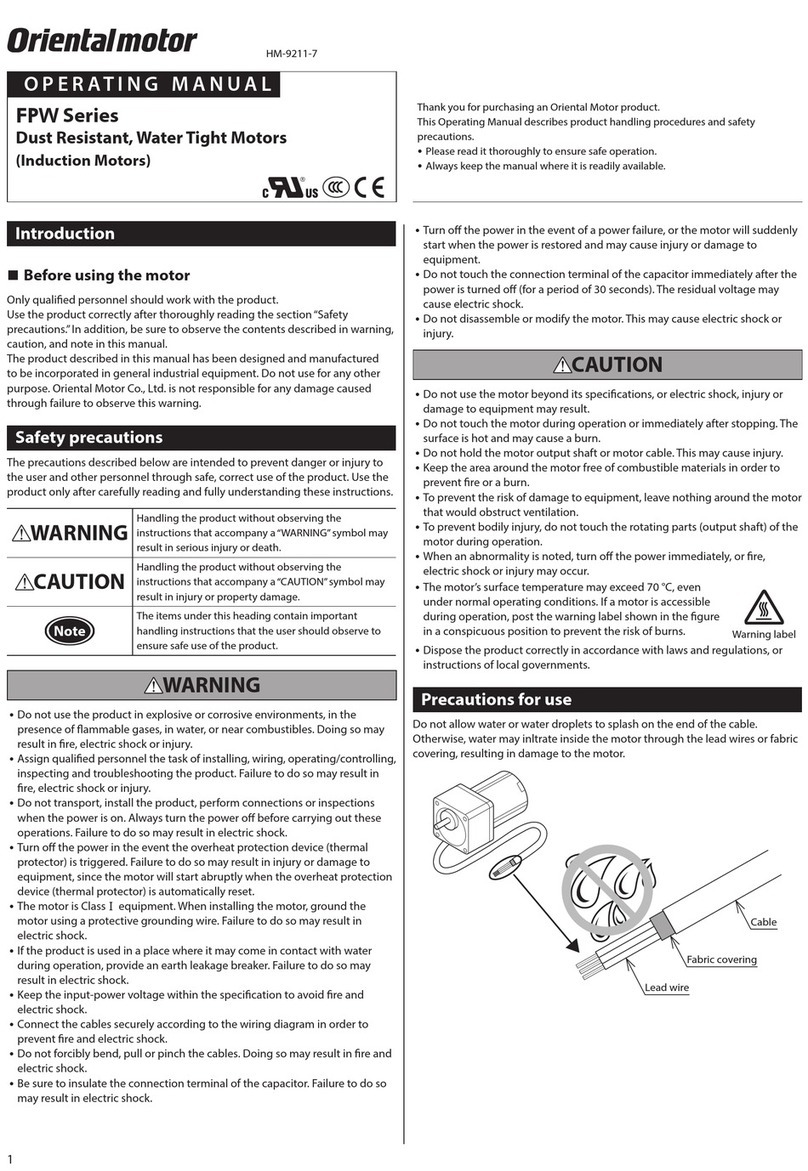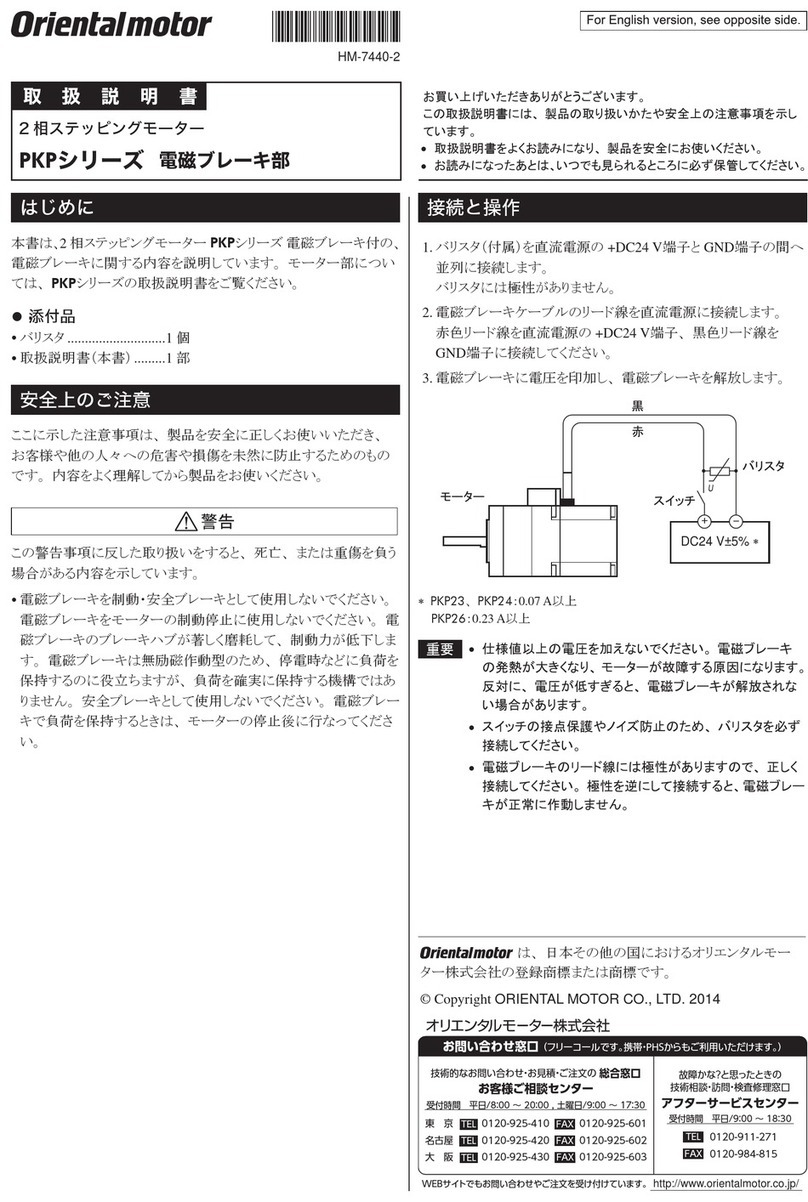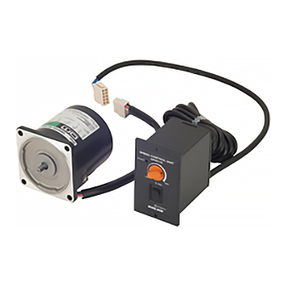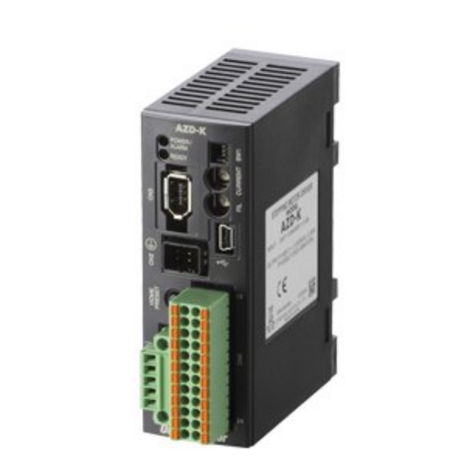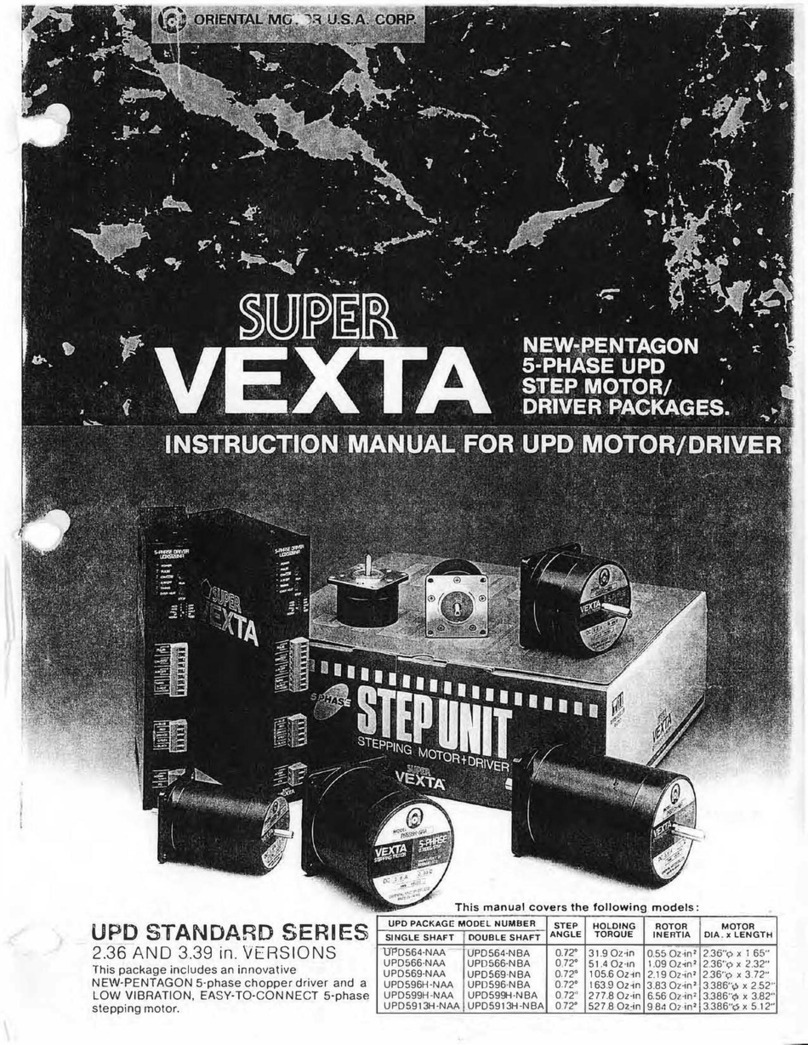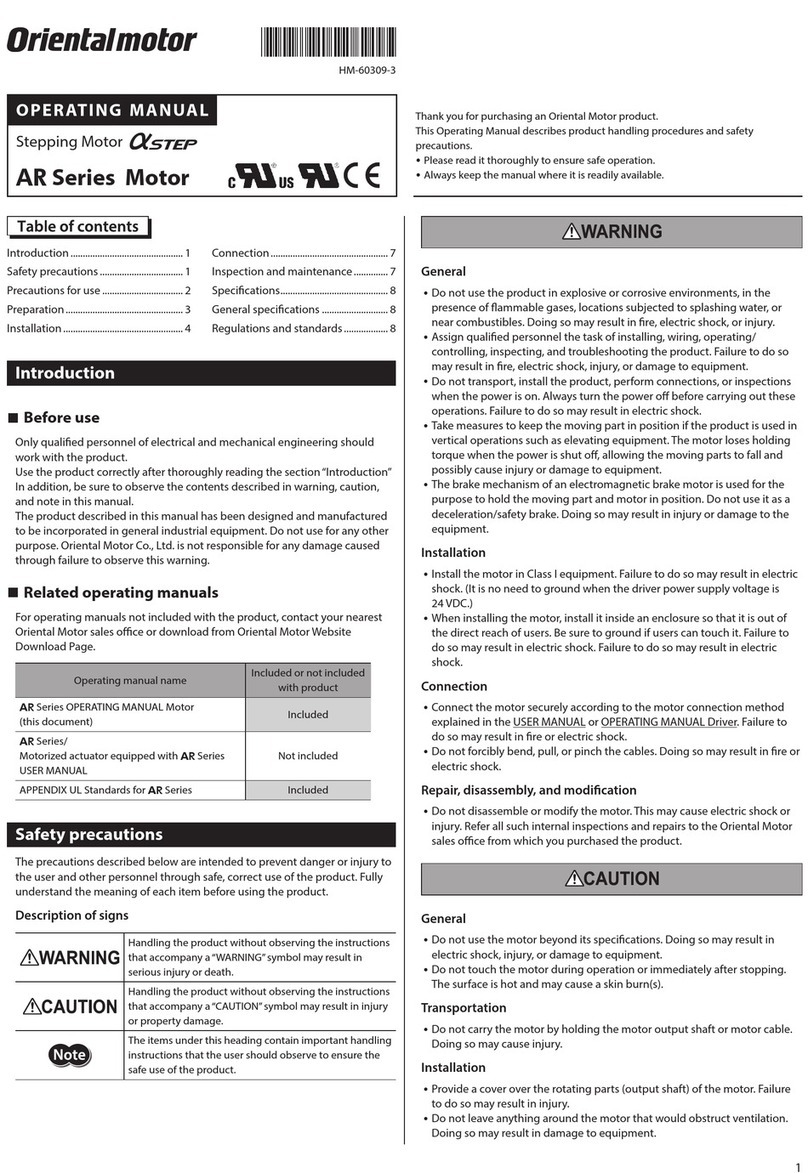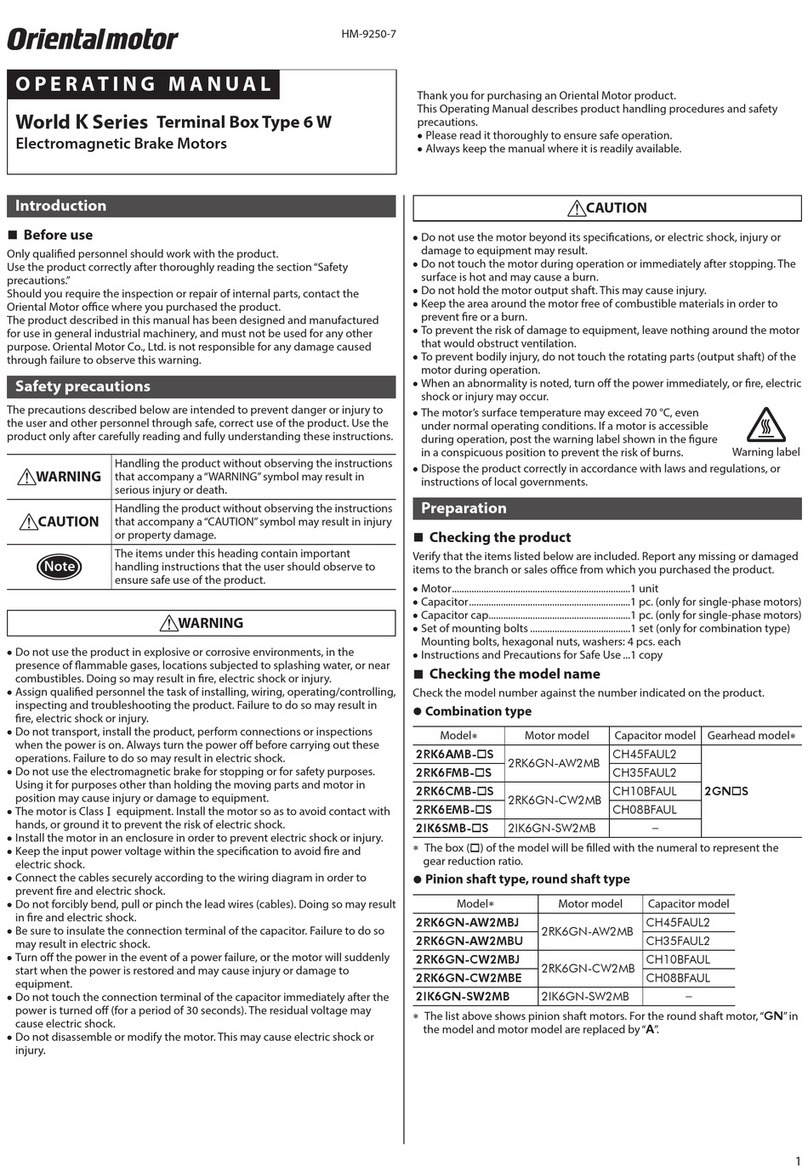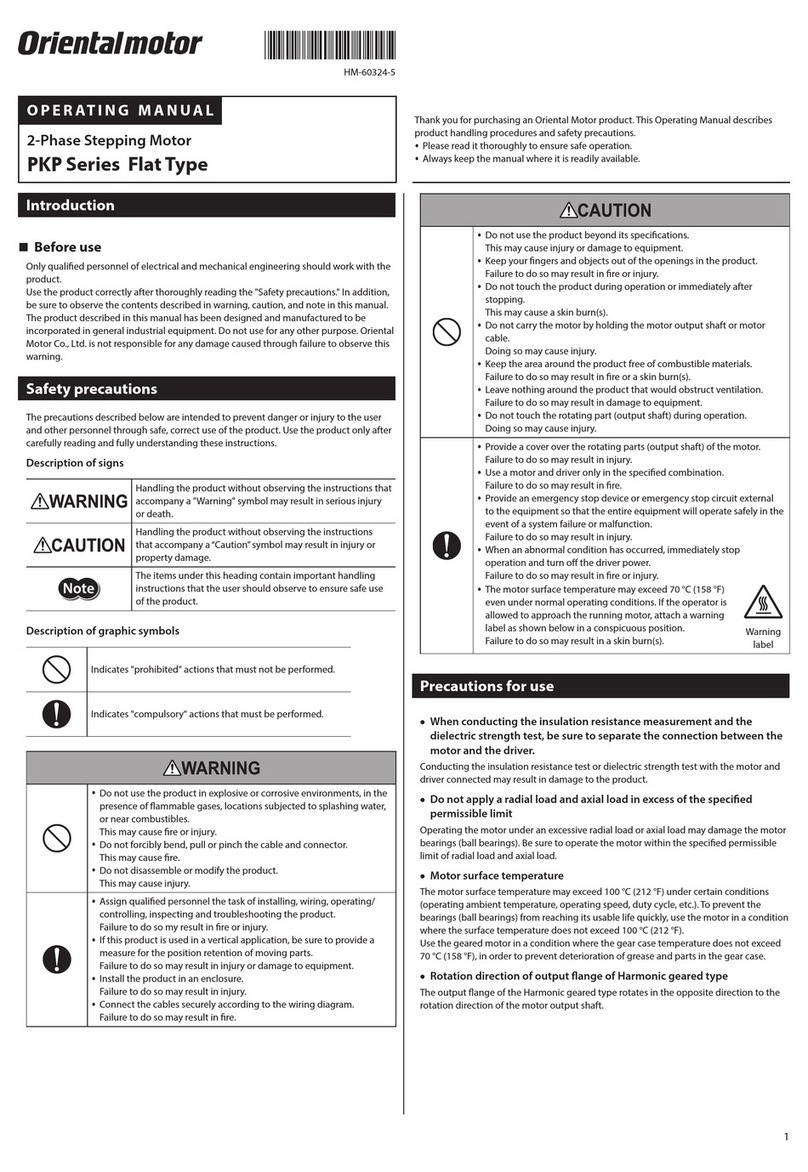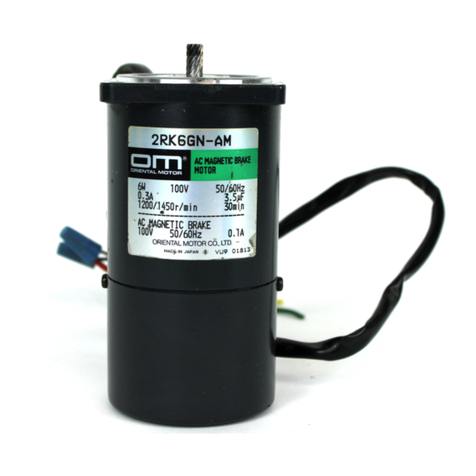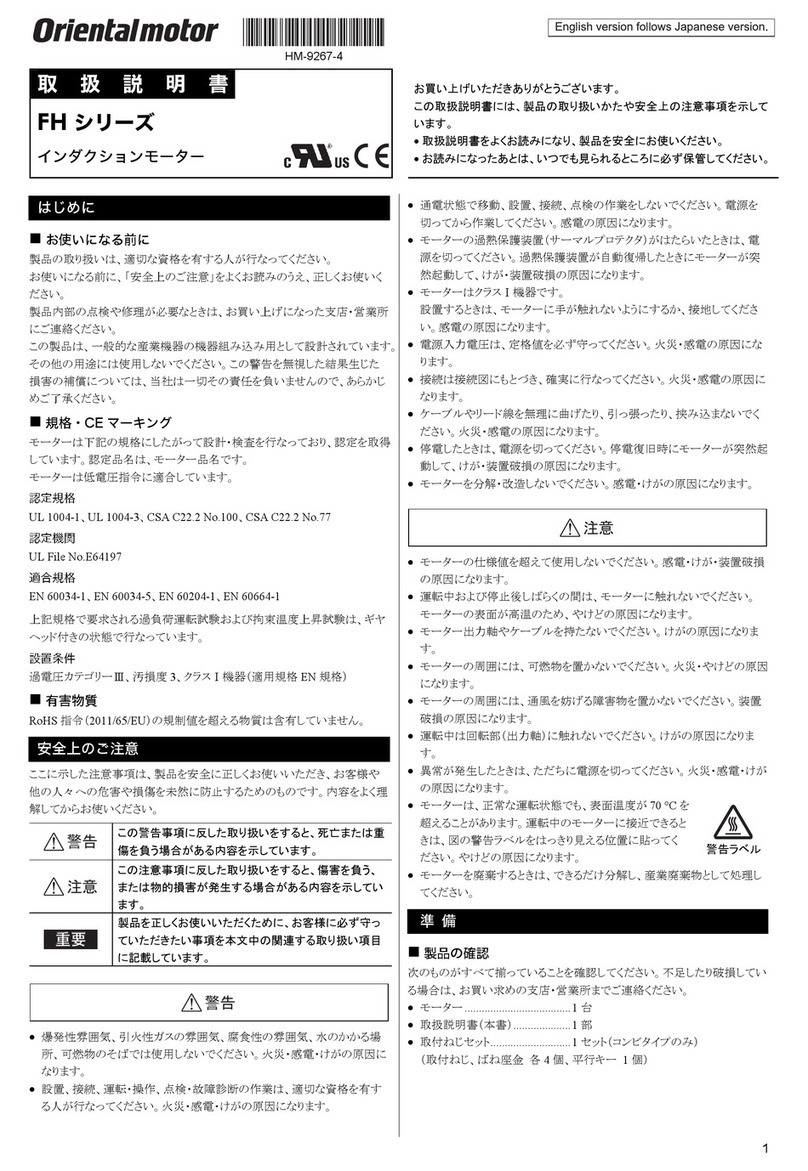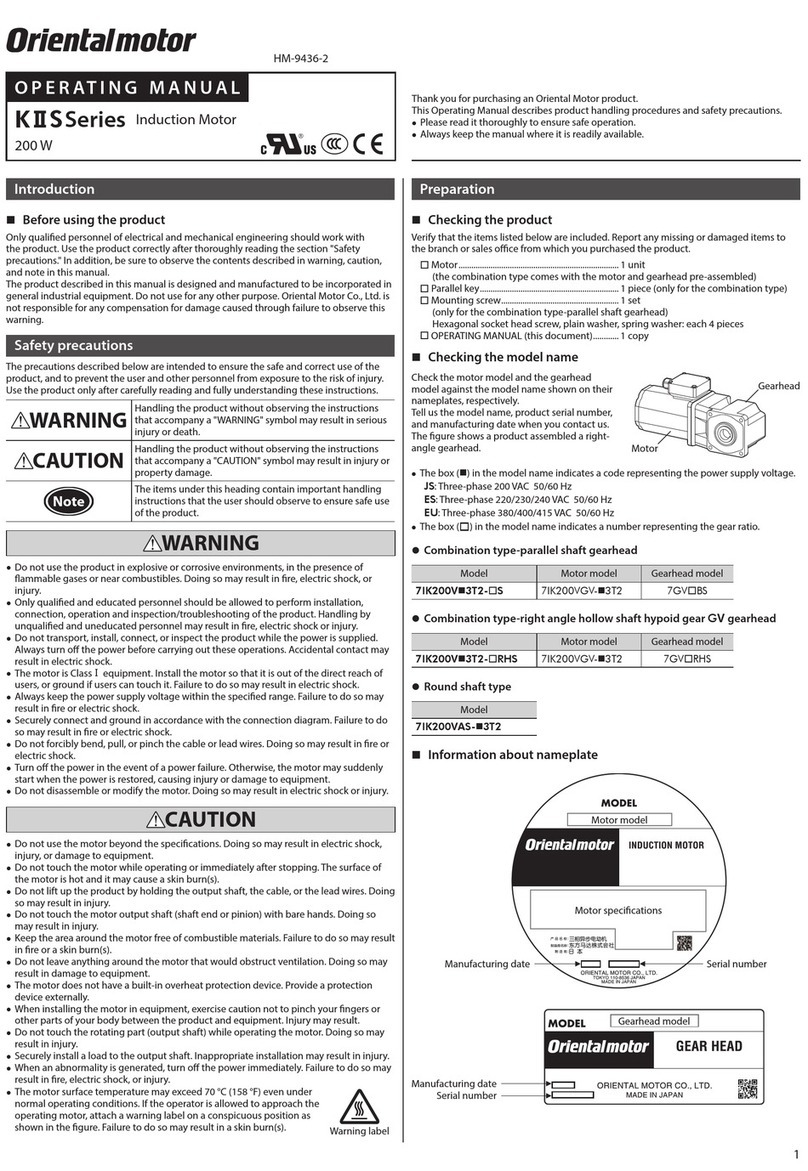
2
Operation
yDo not touch the motor output shaft or the load shaft during operation.
Doing so may result in injury.
yProvide an emergency stop device or emergency stop circuit external to
the equipment so that the entire equipment will operate safely in the event
of a system failure or malfunction. Failure to do so may result in injury.
yThe motor surface temperature may exceed 70 °C (158 °F)
even under normal operating conditions. If the operator is
allowed to approach the motor in operation, ax a warning
label shown in the gure on a conspicuous position. Failure to
do so may result in a skin burn(s).
Warning
label
yFor a DC power supply for electromagnetic brake, use a DC power supply
with reinforced insulation on its primary and secondary sides. Failure to do
so may result in electric shock.
Inspection and maintenance
yDo not touch the terminals while conducting the insulation resistance
measurement or the dielectric strength test. Doing so may result in electric
shock.
Precautions for use
This section covers restrictions and requirements the user should consider
when using the product.
•Be sure to use our cable to connect the motor and the driver.
Check the cable models on p.7.
•When conducting the insulation resistance measurement or
the dielectric strength test, be sure to separate the connection
between the motor and the driver.
Conducting the insulation resistance measurement or the dielectric strength
test with the motor and the driver connected may result in damage to the
product.
•Do not apply a radial load and axial load in excess of the
specied permissible limit.
Continuing to operate the motor under an excessive radial load or axial load
may damage the bearings (ball bearings) of the motor. Be sure to operate the
motor below the specied permissible limits of the radial load and axial load.
Refer to p.6 for details.
•Use the motor in a condition where the motor surface
temperature does not exceed 100 °C (212 °F).
The motor does not have a function to protect from overheating. The surface
temperature on the motor case may exceed 100 °C (212 °F) depending on
operating conditions such as ambient temperature, operating speed, duty
cycle, and others. To prevent the bearings (ball bearings) of the motor from
reaching its usable life quickly, use the motor in a condition where the surface
temperature does not exceed 100 °C (212 °F).
Also, use in a condition where the surface temperature of the gearhead does
not exceed 70 °C (158 °F) in order to prevent deterioration of grease and parts
in the gearhead.
If the motor is to be operated continuously, install the motor in a location
where heat dissipation capacity equivalent to a level achieved with a heat
sink [made of aluminum, 250×250×6 mm (9.84×9.84×0.24 in.)] is ensured.
•Holding torque at standstill
The motor holding torque is reduced by the current cutback function of the
driver at motor standstill. When selecting a motor, check the holding torque
at motor standstill in the specications on the catalog.
•Do not use the electromagnetic brake for braking or as a safety
brake.
Do not use the electromagnetic brake as a means to brake and stop the
motor. The brake hub of the electromagnetic brake will wear signicantly and
the braking force will drop.
Since the power o activated type electromagnetic brake is equipped, it
helps maintain the position of the load when the power is cut o, but this
brake is not a mechanism that holds the load in place securely. Do not use the
electromagnetic brake as a safety brake. To use the electromagnetic brake to
hold the load in place, do so after the motor has stopped.
•Noise elimination measures
Refer to the USER MANUAL for the noise elimination measures.
•Peak torque
Always operate the motor under a load not exceeding the peak torque. If the
load exceeds the peak torque, the gear will be damaged.
•Rotation direction of the output shaft
The rotation direction of the output shaft is set with the “Motor rotation
direction”parameter. The rotation direction of the output shaft with respect
to the setting of the “Motor rotation direction”parameter is shown below.
Setting of parameter Viewed from front face Viewed from rear face
Positive = CW
or
Positive direction = CW
Positive = CCW
or
Positive direction = CCW CW
•Do not perform push-motion operation
Doing so may result in damage to the motor or gearhead.
•Grease measures
On rare occasions, a small amount of grease may ooze out from the motor.
If there is concern over possible environmental damage resulting from
the leakage of grease, check for grease stains during regular inspections.
Alternatively, install an oil pan or other device to prevent leakage from
causing further damage. Oil leakage may lead to problems in the customer’s
equipment or products.
Notes when the connection cable is used
Note the following points when our cable is used.
The connector cover is not shown in the gure.
•When inserting the connector
Hold the connector main body, and
insert it in straight securely.
Inserting the connector in an
inclined state may result in damage
to terminals or a connection failure.
•When pulling out the connector
Pull out the connector in straight while releasing the lock part of the
connector. Pulling out the connector with holding the cable may result in
damage to the connector.
•Bending radius of cable
Use the cable in a state where the
bending radius of the cable is more than
six times of the cable diameter.
Do not bend the lead wires part or x
it with a clamp. Doing so may cause
damage to the connector.
More than 6 times
of cable diameter
lead wires part
